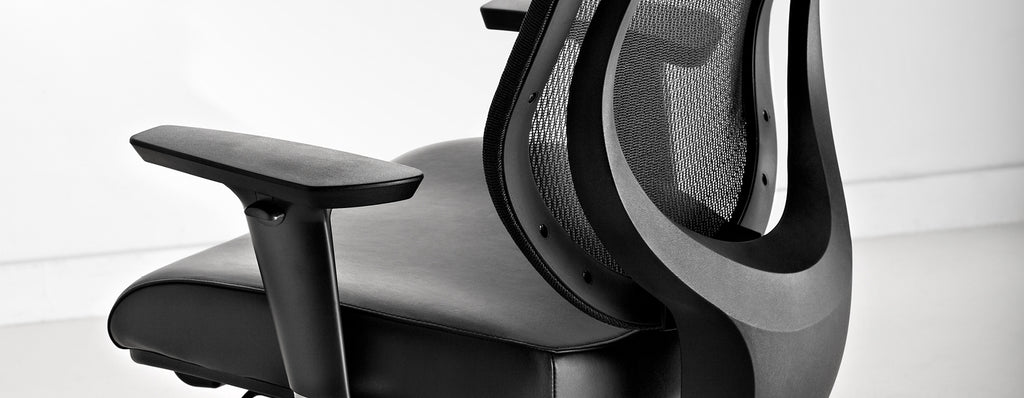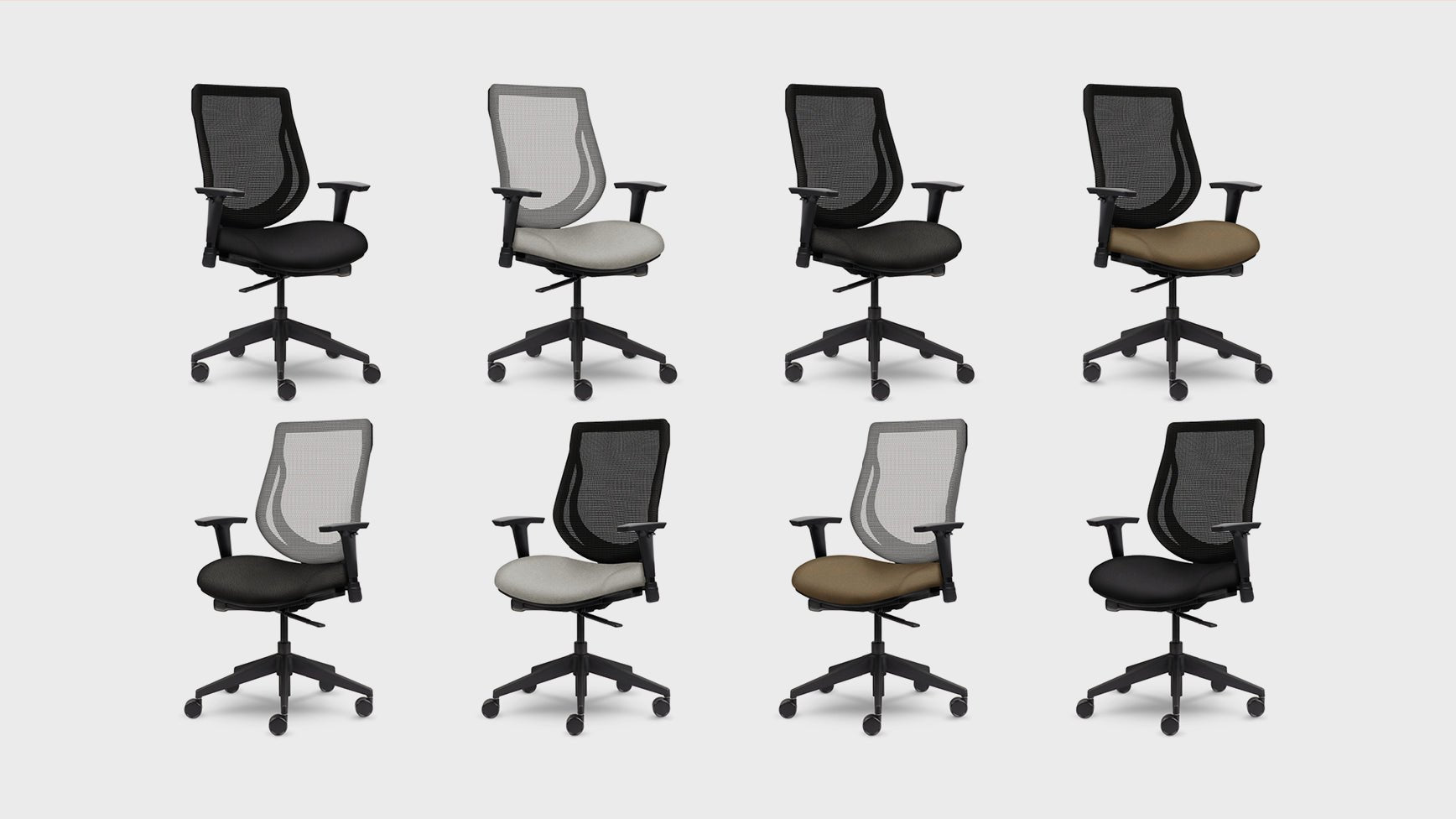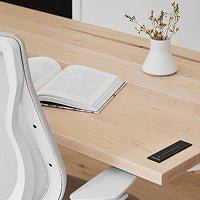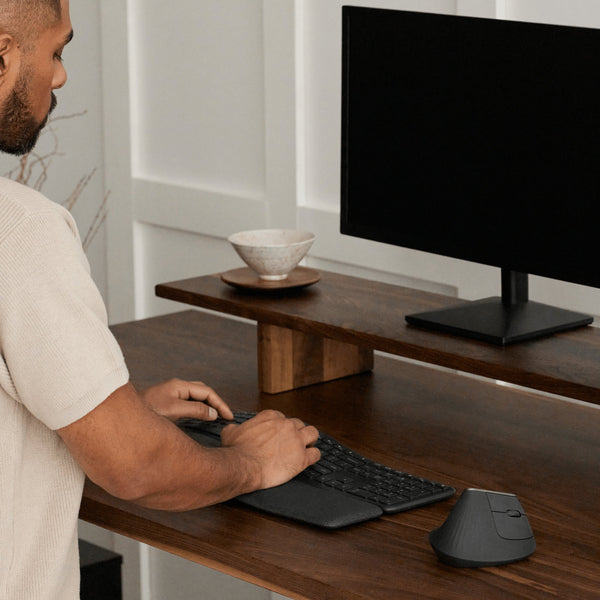Whether you are setting up a home office or redesigning an office space for your employees, navigating the world of ergonomic furniture can be overwhelming. The increasing number of products available on the market makes it challenging to narrow your buying options. At ergonofis, we make a living out of making sure we provide you with the best ergonomic furniture available. One key feature of building an ergonomic workspace is choosing the right ergonomic office chair. In this post, we break down what an ergonomic office chair is, why it is worth the investment, and what are the critical criteria to look for when shopping for one. Spoiler alert: not to brag, but after extensive research, we think we’ve found the ultimate affordable ergonomic office chair!
What is an ergonomic office chair?

First, let’s look at what the term ergonomic means: the Occupational Safety and Health Organization defines it as the “science of fitting workplace conditions and job demands to the capabilities of the working population.” In other words, the field of ergonomics looks at how furniture and objects can be designed to complement the human body, creating safe work environments.
An ergonomic chair, therefore, is one that aims to find a solution to body pains and strains created by using a standard chair for prolonged periods. It is a chair designed to best support the body when sitting at a desk. It considers posture, back support, distribution of weight, comfort, and movement. An ergonomic office chair will have multiple adjustable parts, so it uniquely fits every user and every user can sit comfortably at work.
Why do I need an ergonomic office chair? Is it worth the investment?

Yes, we know, ergonomic office chairs are more expensive than your standard office chairs. But think of it as an investment in your or your employees’ health and productivity.
The foremost, and non-negligible, reason to buy an ergonomic desk chair is health. Spending too much time sitting at your desk has been proven to put you at a higher risk of developing a range of serious disorders. More specifically, sitting in a non-ergonomic chair can lead to the development of musculoskeletal disorders, which affects your muscles, joints, tendons, ligaments, and nerves from the lack of upper back support. It can negatively impact your posture, causing pressure on your spine and backbone, leading to back pain. It can also restrain blood flow, which can lead to deep vein thrombosis, and complications like cervical spondylosis. The right ergonomic chair will conform to your body shape, support a proper posture, keep your joints and tissues in a neutral position, and allow for proper hip and pelvis alignment. This lowers your risk of injury and strain, will give you more energy, and let you focus without distraction and discomfort.
Ultimately, what you are gaining by investing in an ergonomic chair translates directly into your work. If you are an employer contemplating providing your workers with ergonomic chairs, The Washington State Department of Labor and Industries conducted a convincing study. They examined 4000 users who switched to ergonomic furniture in the office and found that absenteeism was reduced by 75%, error rate by 56%, and time on task was increased by 40%. By making the workplace of your employees safer, you are increasing their engagement and providing a more flexible environment that can uniquely adjust to every worker. And if our predictions are right, workers looking for a job will prioritize more and more offices that value the well-being of their employees. Additionally, ergonomic chairs are often high-quality furniture that will last longer and withstand years of wear and tear.
What to look for in a good ergonomic office chair

You will find many chairs on the market that identify as ergonomic, but do not fulfill all the required criteria. If you are going to invest in an ergonomic office chair, make sure you consider the following points to benefit from the best ergonomic support:
Adjustability
What makes a great ergonomic office chair is how you can easily adjust it to your needs. Everybody is different, so every chair needs to be able to adapt to its unique user. Think about who will be using the chair, in what context, and make sure it is adaptable to every function it will serve. Most of the following criteria include the adjustability of a chair’s various parts.
Seat height
A good ergonomic chair will allow for the seat height to be adjusted from 15 to 22 inches off the floor. This range suits people that are 5’ to 6’4” tall. At the proper height, your feet should be flat on the floor, with your knees at a 90-degree angle. This will reduce stress on your knees and lumbar region. A chair with a pneumatic adjustment is ideal as you can correct the height sitting in the chair, but a chair with a spinning mechanism will work to adjust the seat pan height.
Seat width
The standard seat size is between 17 and 20 inches wide to provide ample space for thigh support. Each user needs to be sitting comfortably on a quality seat pan, with at least 1 inch on either side of their hips, but not so wide that their arms need to stretch to touch the armrests.
Seat depth
On a right ergonomic office chair, the seat needs to be deep enough for the user to sit with their back against the backrest but leaves a space for 2 to 4 fingers between the end of the chair and the user’s knees. At least ¾ of the thighs need to be supported by the seat. Look for chairs with a seat that slides, which lets the user slide the seat in and out while sitting in the chair.
Lumbar support
The presence of good lumbar support, and its adjustability, is a critical criterion. The lumbar spine supports and stabilizes the upper body, including the neck and head. The chair backrest allows for truncal movement, protects the spinal cord, and controls leg movements. Its concave curve helps to even weight distribution, which reduces the concentration of stress. Sitting in a chair without lumbar support tends to flatten that curve, which leads to lower back pain.
Backrest
A typical backrest is between 12 and 19 inches wide. It needs to support the natural curve of the spine. An ergonomic office chair should promote dynamic sitting rather than static posture to increase blood flow. It should, therefore, allow its user to try different recline postures to relieve some weight from their lower backs. Pressure on the lumbar discs and muscle activity are at their lowest with a reclining degree that is between 110 and 130, depending on the body type.
Seat and backrest materials
Look for materials that are comfortable for extended periods.
- Make sure the seat pan padding is made of high-quality foam. On most ergonomic chairs, insufficient padding and low-quality foam can lead to misalignment in the hips, imbalance, back pain, fatigue, and discomfort.
- Avoid unbreathable synthetic materials. Cloth fabric on the seat is comfortable and breathable, and leather is easy to clean
- A mesh backrest keeps its users cool by keeping the air flowing, and comfortably contours the body while spreading the weight across a large area.
Armrests
The armrests need to be adjustable and even removable if possible. The ideal height of armrests is from 7” to 10” above the seat pan height. They should be broad and comfortable so that the elbows and forearms can rest lightly on them while typing.
Movement and stability
The chair needs to move and rotate easily so that its user can reach anything on their desk without straining. A chair that allows for movement also promotes a dynamic position and increases blood flow. Additionally, it needs to be stable. For this, an ergonomic office chair needs to have at least 5 spokes. And make sure the wheels are of high quality, so no damage is done to the floor surface. Also, check its weight capacity to validate it’s appropriate for its user.
Manufacturing and warranties
Your ergonomic office chair will go through years of wear and tear, so make sure it comes with a good warranty. You might also want to check where it is made (the closer to home the better!), how sustainable it is, and any certifications it may have.
Price
Ergonomic office chair prices range from $200 to $2,000.
Why is the YouToo chair the best ergonomic office chair on the market?

After extensive research, we believe we have found an affordable ergonomic office chair that brilliantly fulfills the above criteria. We have partnered with Allseating to offer you the YouToo ergonomic office chair. Easy to install and adapt, and with a 10-year warranty, the YouToo chair delivers on adjustability at an affordable price. It has exceptional lumbar support, fits the curve of your spine, and encourages movement. With a simple and elegant look, you can choose from a variety of quality materials and colors. Plus, it is made locally and sustainably! Here are the characteristics that convinced us:
|
Seat height |
|
|
Seat width |
|
|
Lumbar support |
|
|
Backrest |
|
|
Materials |
|
|
Armrests |
|
|
Movement and stability |
|
|
Manufacturing and warranties |
|
|
Price |
|
Tip : It pays to buy in bulk! We offer discounts on bulk orders, so give us a call, and we’ll send you a quote. Moreover, if you order more than 3 chairs, you can have access to additional materials and colors.
By now, you’ll understand that we are passionate about ergonomic office furniture. We believe that working in a healthy environment promotes well-being, productivity, and fulfillment. And since we spend so much time in it, an ergonomic office chair is often the gateway item into the world of ergonomics. It helps sustain us throughout the workday and reduces, even eliminates back pain. We hope this information will allow you to make an informed choice. If you want more tips on how to set up an ergonomic workspace, click here. And if you’re buying an ergonomic office chair as you are acclimating to working from home, we have a few tips for that as well. But most importantly, we are here to help! If you have any questions or interrogations, contact us or book a virtual or in-person appointment with us.
References
https://www.spine-health.com/wellness/ergonomics/office-chair-choosing-right-ergonomic-office-chair
https://www.spine-health.com/conditions/spine-anatomy/lumbar-spine-anatomy-and-pain
https://www.wikihow.com/Choose-an-Ergonomic-Office-Chair
https://www.thehumansolution.com/how-to-choose-the-best-ergonomic-chair.html
https://www.ehs.pitt.edu/workplace/ergonomics/chair
https://osha.oregon.gov/OSHAPubs/ergo/ergoadvantages.pdf
https://www.conceptseating.com/benefits-of-ergonomic-seating
http://www.safecomputingtips.com/what-is-an-ergonomic-chair/
https://www.ccohs.ca/oshanswers/ergonomics/office/chair.html
https://www.chairoffice.co.uk/blog/the-ergonomics-of-a-chair-explained/






Leave a comment